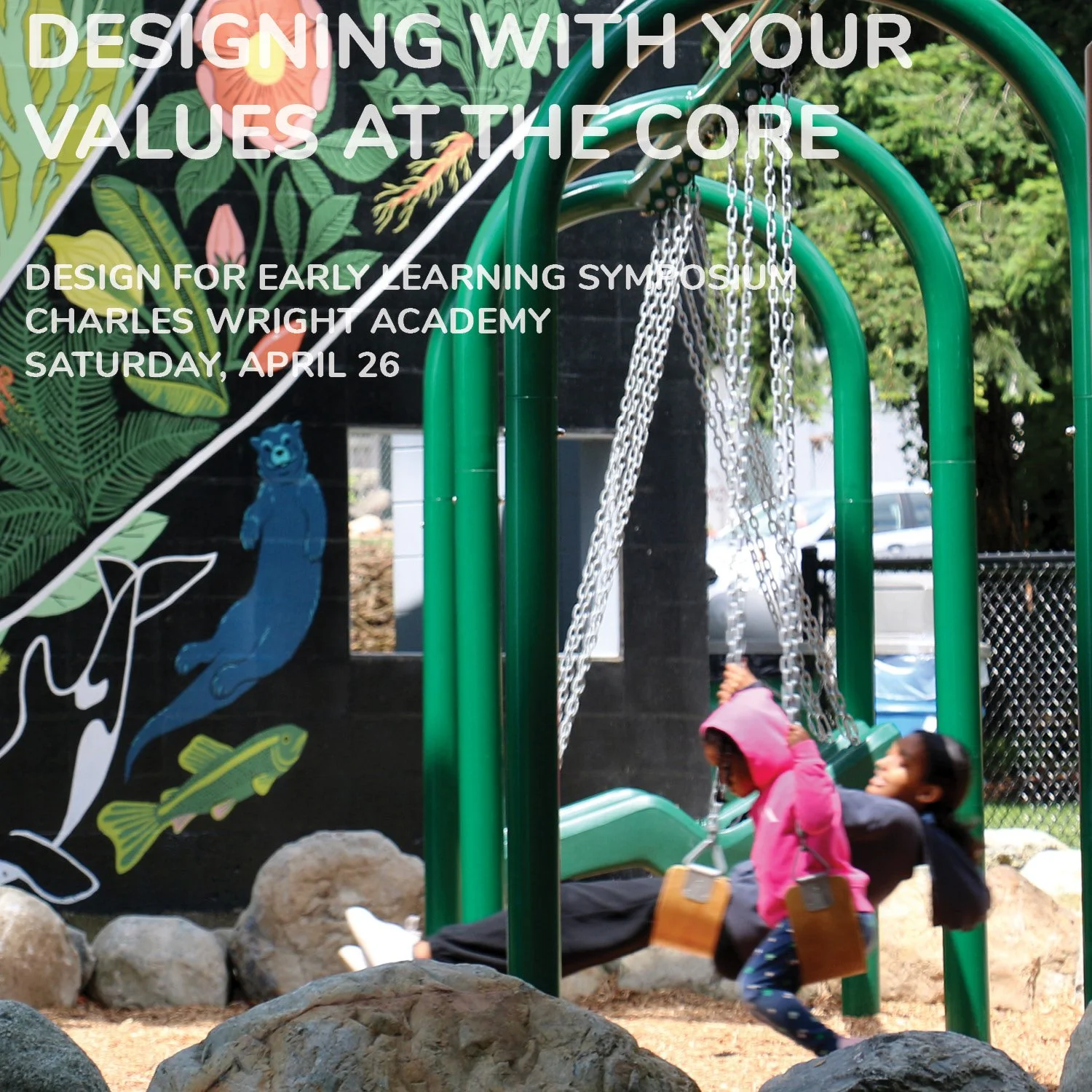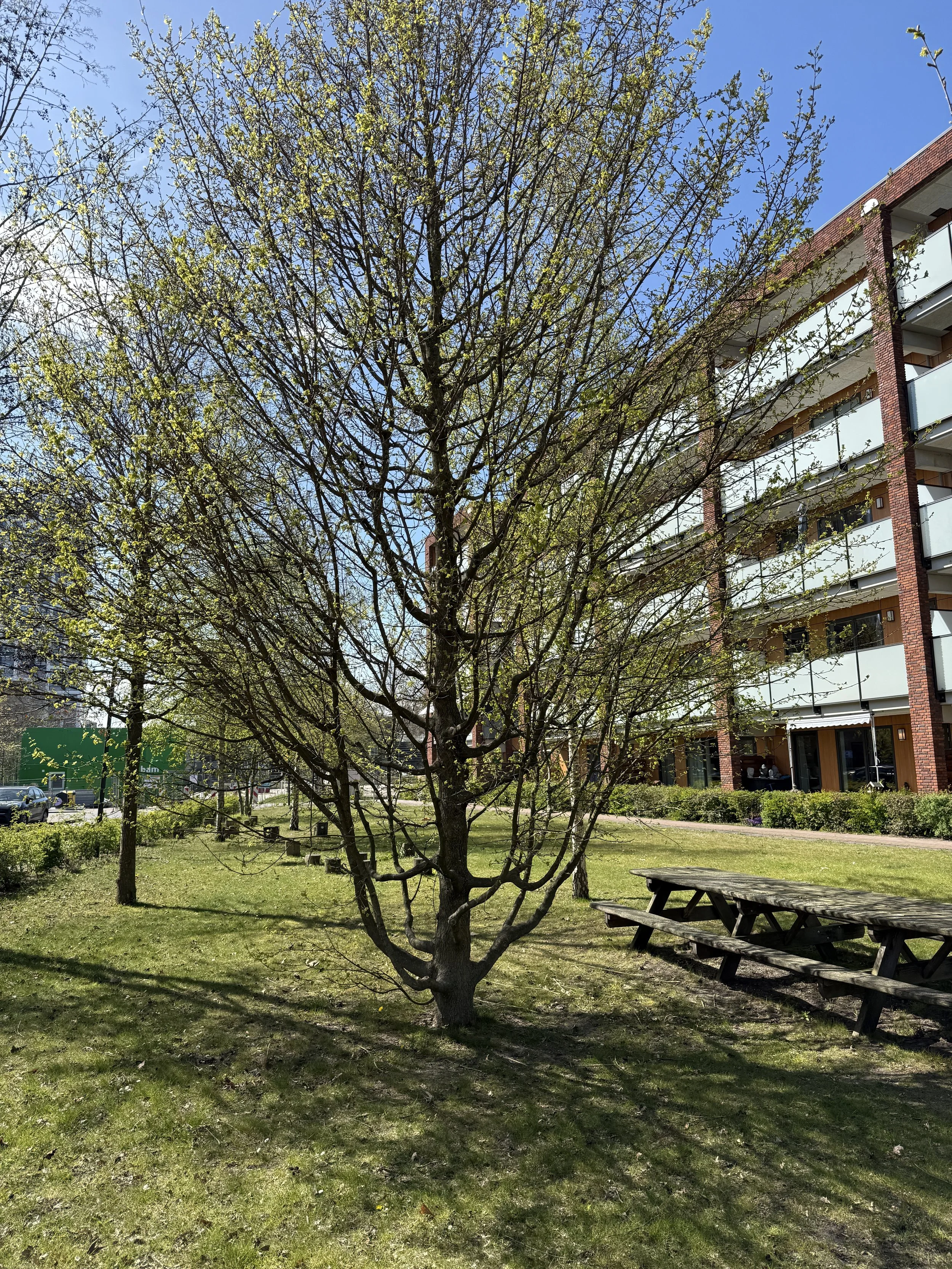Seeding Change
Brice Maryman delivered the following remarks to the Design for Early Learning symposium held at the Charles Wright Academy in Tacoma WA on April 26, 2025 as part of a panel presentation on “Designing with Your Values at the Core.” Panel members included Rixa Evershed of Charles Wright Academy and Brittain Zimmerman of The Ivy School at The Children’s Museum of Southern Oregon. The symposium was an opportunity for early learning providers to connect and learn with members of the design community.
“Let me start by saying that while I so appreciate the Design for Early Learning team inviting me to share the stage with Britt and Rixa, I also have to confess about feeling both intimidated and a little bit like an imposter being up here speaking, ostensibly, about early childhood education. After all, I’m not an early childhood educator. I don’t run a childcare facility, nor do I run a children’s museum. My daily work is often behind a computer, or in coordination meetings, and working and designing with kids happens far too infrequently. And in a session titled “Designing with Your Values at the Core,” surely there are different values that have pulled us into our respective callings.
But, as one of a team of landscape architects who design outdoor learning spaces, I remember what our early learning clients have shared with our team. You’ve taught us that we are both caretakers and caregivers: stewards of the next generations of life, and we all take that responsibility seriously.
Part of that responsibility is understanding and wrestling with the context of our times. In our office, in an era of climate disruption, habitat loss, wildfires, housing scarcity, and political instability, we try to keep our sanity by focusing on what we can control, and taking hold of our agency as we help shape the future. That means working with our clients to physically express their values in built projects, each of which we see as seeds of a better future. Seeds promise the next generation, and a generation after that, and one after that. They imply inexhaustible opportunities for growth, with each generation working to bend not just the individual, but—as evolution teaches us—the entire species just a bit toward what’s needed for survival becoming more anti-fragile, more able to adapt, more likely to cooperate to compete, with each generational cohort.
As we work on these projects, we think a lot about the conditions for not just thriving individual plants, but of thriving ecosystems: of colonies and communities, of ecotones and ecologies. We think about how a shade-loving trillium will bake in the sun, how a skunk cabbage will wither on a hillside, and how beargrass will never bloom under the canopy of a Pacific Northwest forest. We think about the conditions for success: the soils, the amount of water, the solar exposure, how windy, or salty, or exposed, or sheltered a site might be. And in each of those conditions, we deploy the plants that can thrive in the wind and salt and the wet and the dry: the fragile trillium in the deep forest, the skunk cabbage in a spongy wetland, the beargrass in an exposed mountain meadow.
We think about how creating the right environment for these living creatures will make all the difference in their successes, in their ability to thrive, and contribute to the community of all the living things around them. We think about how the care we put into their selection, procurement, and planting yields untold dividends for us: protecting us from pollutants, absorbing floodwaters, bringing beauty into our lives, reducing anxiety, and releasing oxytocin as we dig them into the soil. We think about how seeds turn into plants that contribute to the oxygen cycle, the carbon cycle, the water cycle, and so on. We take comfort in the inherent resiliency of this growth, in this deep reciprocity of care.
By now, maybe you’ve gotten the sense that this isn’t just about plants.
As a practice we think about these same concerns, themes and values when we think about crafting spaces for children. Though its means and methods are different, we fully believe the language of care is infinite and translatable.
We think about the outdoor spaces we design both in terms of Loris Malaguzzi’s conception of the environment as the third teacher, and we think about the research that reveals how profound childhood experiences with the natural world shape people into an empathetic adulthood that cares for the broader world. We love that the environment has agency–it DOES things–and so to, as they mature, will the child have agency in the world around them. What they’ve learned and experienced in their early learning years will give form to new environments and new possibilities that will shape the next gereration and so on.
A couple of weeks ago, I had the pleasure of attending a study tour in the Netherlands and wanted to share this experience I had in Utrecht. This is the approach to a pedestrian and bicycle bridge that goes over one of the large shipping canals that crisscross the country. As we rise up, this joyful piece of infrastructure becomes the roof of a Montessori school. And these boys, who I assume attend the school, are not confined to its walls and fences but are offering us passersby high fives as we struggle up what has to be the highest hill in Holland.
I’ve been thinking about the different worlds those kids will be capable of making as adults, having had this experience as kids. We have to wonder what policies will their imaginations be able to conceive? What new green buildings might they construct? And what respect will they afford others by having such kind and pro-social interactions with their neighbors? How will their decisions be different than those of the kids in America where our care economies are criminally-underfunded, if not under irresponsible and rapacious attack?
So we’ve been asking: what are the ways that the outdoor learning spaces we design can begin to build a more virtuous feedback loop?
We start at the basics: While everything is being pushed online into digital and virtual spaces, we ground this framework in the fact that we are physical beings and the spaces that provide the best learning are corporeal and embodied: made for kids to interact with their environment and with one another.
Next, the spaces need to offer psychological cushioning; they must be safe, healthy, and slow. As resilient as they are, children’s bodies and brains have not evolved for the modern world. There are so many things that we consider normal, that, from an evolutionary perspective, are anything but, so creating outdoor spaces to align with the millenia rather than the moment, is a precondition to allowing kids’ brains grow into their full capacity.
Then we look at the design of the space itself. We start with loose parts and green starts, creating spaces that are both biophilic and exploratory. These impulses tap into some of the earliest parts of our physiology where we were surrounded by forest and savannah, and found food and shelter by manipulating the world around us.
Next we go to multisensory and messy. Our modern lives are perhaps a bit too tidy and sterile. Most kids want to get messy and feel mud between their toes, feel rushing water pull sticky sand from their skin, and relish the smell of honeysuckle and rose and lavender. They want to hear physics of bugs and taste the chemistry of berries. In their curiousity, they might want to touch the frog, or the banana slug, or the lambs ear. Their world of learning is a sensory bacchanalia and the environment around them should be stimulate such revelry.
Finally, and importantly because this seems to be one of the things that gets overlooked most often, outdoor environments should be integrated and inclusive so that they are spaces where everyone feels like they belong. More than meeting current laws, no space for kids should other anyone because of their abilities, but should invite everyone in to interact and engage.
I want to leave you with this hopeful story because I know this a time of deep and dizzying uncertainty for a whole host of reasons.
I recently visited a new housing development that was doing so much, so right. It had solar panels, and was nature-forward in much of its planning. There were small pockets parks throughout and a thoughtful and integrated stormwater management strategy. But none of those things are what this community invested in first. No, this tree was one of their first purchases, and a lot of thought went into it. This wasn’t just any tree; it was the perfect tree. Not because it offered exceptionally cooling shade or is associated with a religious tradition or that it offered food.
No, this tree was the first thing put in the ground for one reason: its form, the strength of its wood, its maturity, make it a perfect tree for kids to climb. This was a seed—a promise to anyone who wanted to live here—that this place would grow to take care of their kids and their kids, by having intimate, joyful, and daily contact with nature would be invested in taking care of this place and the broader world.
And so they do.
As this community has matured, not only have the kids continued to climb that tree, but they’ve also become the stewards of the micro-forest that’s planted on an island: one that only the kids can access: their secret garden. There they are invited to count species and monitor the island’s biome. It is a ritual, built into the rhythms of their young lives, planting another seed.
What started as idea has become an ecosystem that the community cares for. Each seed and seedling planted on that island supports and captivates each child in that community. And each child in that community cares for each creature and square foot of canopy on that island. They are shaped by one another, and the intentionality and values of the loving adults who set it all in motion.
That, it seems to me, is our shared values. To give our kids the gift of love, of support, and of space to inspire inspired thinking in the next generations. So the question I will leave you with is this: what values do you want to see propogated and how can the world of your early learning center environment help those values grow further into the world.
Thank you.”




